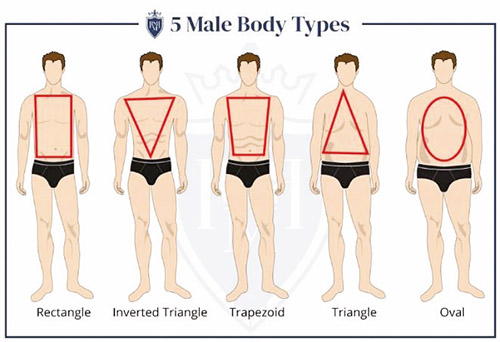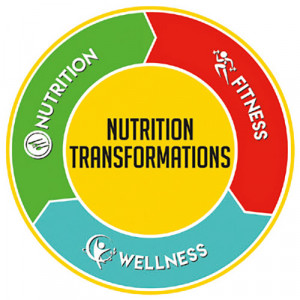
Dear Jenn,
I’m a 56-year-old man with a family and a successful business career. I make time to exercise, even with all my responsibilities and life’s pressures. I feel exercise relieves me of stress and helps keep me healthy. I exercise three times a week for about 45 minutes and concentrate workouts on my abdominal area because I’m “apple-shaped” and my stomach never seems to get the kind of definition I would like to have. I’m 5’10,” medium-framed, and weigh approximately 185 pounds. With a middle-age paunch, I’m not the Mr. America I used to be in my younger years. Can you suggest how I can get rid of my belly fat and look more like my older-younger self?
Sincerely,

Apple-Shaped Belly Fat (ASBF)
Dear Apple Shaped Belly Fat (ASBF),
The trademark signature you have selected alludes to your dissatisfaction with your body image. You have a family and a successful career. That’s wonderful! Many people do not make time to exercise, therefore, you get a gold star from Nutrition Transformations. And yes, exercise is a great stress reliever and important for good health and wellness.

Body Shape
We all come in different shapes and sizes. Some of us are tall and others not so tall, but genetically, we are what we are. Even with modern technology, not everything can be adjusted. ASBF, you describe yourself as “apple-shaped” or the “oval” body type seen from the chart below. You will always have a little more fat in the abdominal area due to genetic makeup. Some people go to great lengths to adjust their genetic body type, such as with liposuction, fat freezing technology, high frequency electromagnetic energy procedures and radiotechnology.
What Is Your Body Type?

Information About Body Fat
According to US Pharmacist, August 17, 2018 (http://bit.ly/3Hmk23z), fat stored in the body depends on genes, hormones, diet, exercise habits and levels of stress. Foods and beverages containing sugar or high-fructose corn syrup, fruit juices, more than two alcoholic drinks a day, inadequate protein intake, and insufficient fiber promote the storage of visceral fat. (Wee below definition.) A sedentary or inactive lifestyle, stress and poor sleep also increase visceral fat.
There are different types of fat in our bodies that differ by location and impact on overall health. For our discussion, I noted two:
1. Subcutaneous fat is located under the skin and accounts for 90% of body fat. You can “pinch an inch” or more with this type of fat. Tendency with pear-shaped figures but does not metabolically interfere with body functions.
2. Visceral fat is 10% of the remaining body fat and is found deep behind the abdominal muscles, around the intestines, liver and organs. You cannot feel this type of fat. Medical scans can detect it. In abundance, responsible for the stomach bulge. Involved in health-related problems.
Hormones and Aging
According to the above-mentioned article in U.S. Pharmacist, men have a higher tendency to accumulate abdominal visceral fat (organ fat or intra-abdominal fat) compared to premenopausal women. After the age of 40, men have a drop in testosterone, and excess calories are stored as visceral fat. A December 2019 article by Andromada M. Nauli and Sahar Matin in the journal Frontiers in Physiology (http://bit.ly/3ZNKfQ1) notes that as testosterone naturally drops in males, visceral fat accumulates. The accumulated visceral fat then interferes with testosterone production—a Catch-22 situation. In addition, with falling testosterone there is a rise in the female hormone estradiol which has negative effects on male sexual function.
Concerns About Belly Fat
Several studies have linked excess visceral fat with higher total cholesterol blood levels, higher LDL (bad) cholesterol, lower HDL (good) cholesterol, increased risk for cardiovascular disease, high blood pressure, metabolic disturbances, insulin resistance and type 2 diabetes. In women, it is also associated with breast cancer and gallbladder disease.
Therefore, being genetically apple/oval-shaped, male and overweight is a risk factor for health problems. And both diet and lifestyle can impact belly fat/visceral, too.
“Oy, what happened to me?”
ASBF, let’s look at your objective information: 5’10” / (70”), medium-framed, 185 pounds. Your desired body weight (DBW) or the average weight for a man your size is about 160 pounds. Your BMI (body mass index) is 26.54, in the “overweight category.” If you lost 25 pounds, you could reduce your abdominal paunch and importantly, visceral fat.
What Can You Do to Get Rid of Belly Fat?
The good news is that belly fat responds efficiently to diet and exercise! To reduce visceral fat and potentially increase lean muscle mass, add 30 minutes of moderate physical activity to your daily routine most days of the week. Include aerobic exercise such as walking and anaerobic exercise, meaning weight-lifting.
Combining a more balanced diet with regular exercise can accelerate the loss of belly fat and improve other cardiometabolic risk factors.
Add more whole fruits and vegetables and minimize sugar intake and processed foods. Replace saturated fats and trans fats (bad dietary fat) with mono and polyunsaturated fats (good dietary fat).
Quit smoking, get more than five hours of sleep per night, and manage mental stress.
ASBF, you already exercise. That’s wonderful, but look at your diet. Are you eating healthy? What about your caloric intake and portion sizes? Excess calories in males above 40 tend to be deposited in the belly as visceral fat.
Interesting Fact:
In the Journal of Applied Physiology, May 16, 2018, by Gretchen Reynolds, “working out muscles on one side of our bodies can keep the muscles on the other side strong and fit, even if we do not move them at all. The finding has implications for injury recovery and underscores how capable and confounding our bodies can be.”
ASBF, working out mostly on your abdominals may not be working on the problem. Perhaps increase aerobic exercises and work all muscle groups. And question: Can you work out for 60 minutes instead of 45 minutes and/or add in an extra day to work out?? Just asking!
Conclusion
We must accept our genetic makeup and do the best with ourselves. Having excess belly fat is not only about body image but health. Visceral fat is metabolically active and linked to serious health problems. To help reduce visceral fat and/or belly fat the following is recommended:
1. Achieve desired body weight. How? Reduce calories and start exercising!
2. Consume fruits, vegetables, mono and polyunsaturated fats, lean proteins and higher-fiber complex carbohydrates. Avoid sugar, sweets and processed foods.
3. Reduce stress
4. Sleep well: Five hours or more a night
5. Exercise aerobically and anaerobically for at least 30-plus minutes daily, five days a week.
If you or a loved one seeks better health and wellness to avoid an avalanche of health problems, Nutrition Transformations is here for you. We will coordinate a personalized diet and work out program to meet your specific needs. Weight loss medication is available for those who would benefit. With us, failure is not an option. Don’t delay, call us today!
Yours in good health,
Jenn
718-644-1387
See blog!












